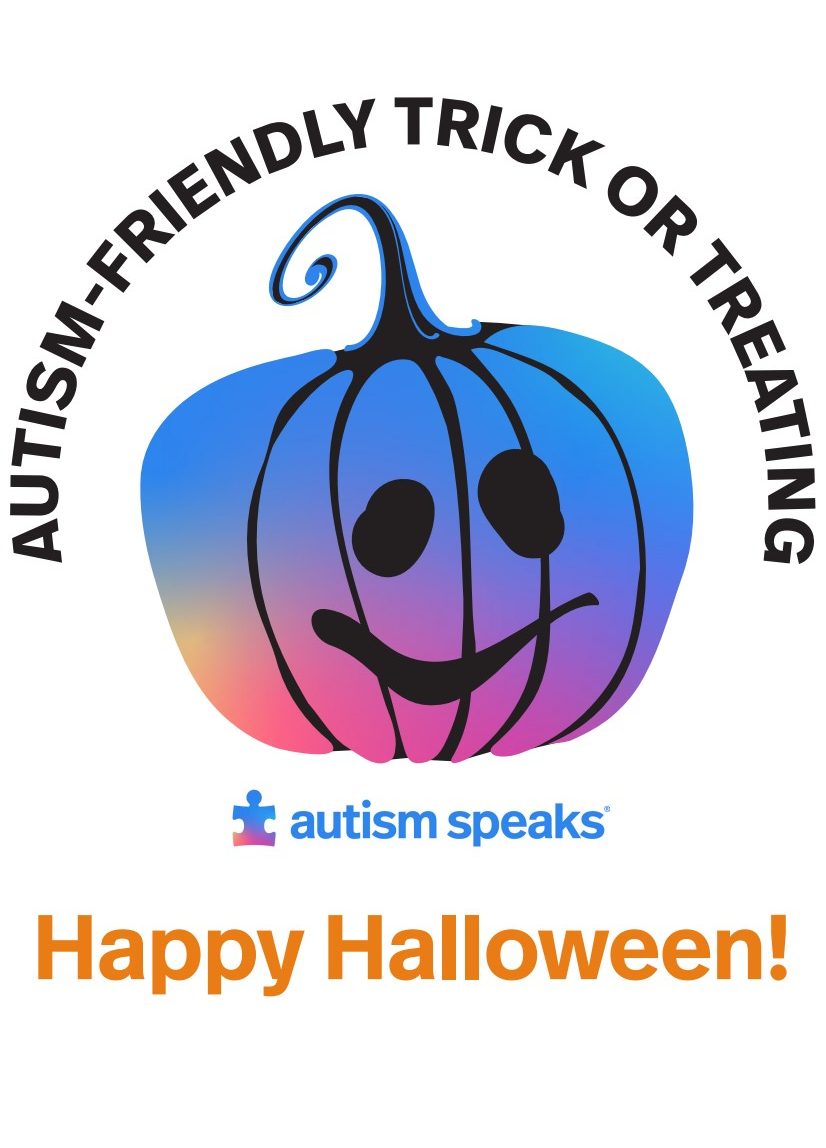Information from Autism Speaks & Easter Seals
Halloween is a fun night of costumes and candy for kids of all ages. But for those on the autism spectrum, scary sounds and decorations, tight or scratchy costumes and going out at night can be a lot to handle. Helping your child know what to expect from Halloween can help make it a fun time for everyone.
To help you get Halloween off to a good start:
- Use Autism Speaks’ personalized teaching story All About Halloween to help your child learn what to expect around Halloween. You can add your own pictures and text to the story. It also includes a badge that autistic children can wear to let candy-givers know that they may communicate differently than other trick-or-treaters.
- Hang one of these signs on your door or window to let visitors know that your home is autism-friendly. And use our templates to carve and decorate pumpkins with your family.
- Find more tips online here!
- Let your child’s interests shine. Help your child choose a costume that reflects his/her interests
- Learn to incorporate your child’s wheelchair into his/her costume. If your child uses a wheelchair, a lot of great and creative ideas can incorporate the chair into their costume.
- Do a trial run before the big day/night. Some costumes might be unexpectedly uncomfortable or cumbersome, and you’d hate to wait until 5 minutes before you’re about to leave for school or trick-or-treating to find that out!
- Before Halloween, put your child’s costume on and take a long walk around the house, or the block. This will help make sure that your child is comfortable and will be able to enjoy the costume and move in it easily.
- Talk to your child about what they might expect. Sometimes Halloween means your child is exposed to things that might frighten him/her: Haunted houses, scary costumes or noises. Talk to your child about things they might encounter during trick-or-treating, and practice self-calming skills in case they do get frightened while out that night.
- Research the sorts of treats your child can eat. Many children with disabilities may have food allergies or sensitivities that limit the treats they’re able to eat.
- If your child is non-verbal, Halloween can be a great opportunity to work on initiating communication! Program your child’s communication device to say “Trick or treat” or ask his/her teacher to design a picture symbol your child can use as he goes door to door.
